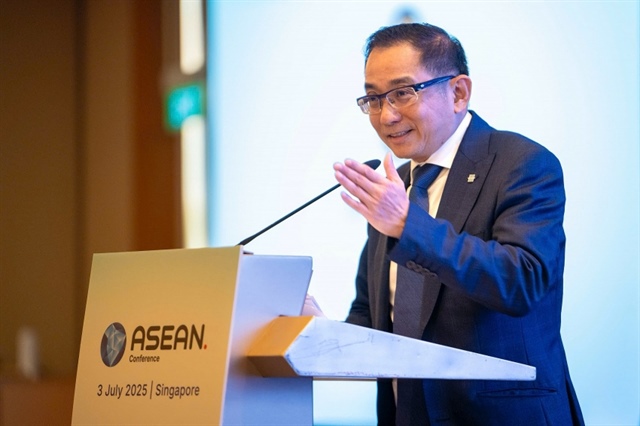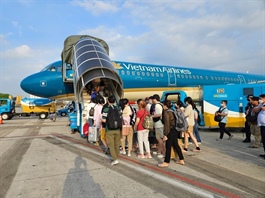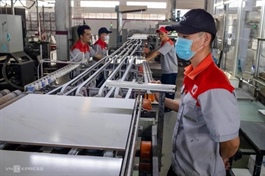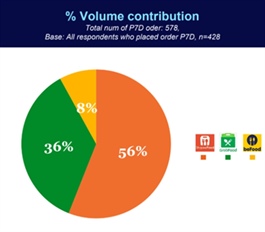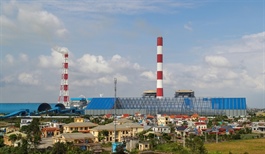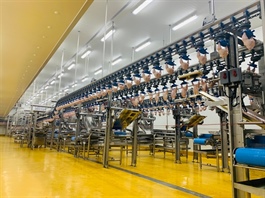Vietnam's next chapter: from factory floor to strategic value hub
Vietnam's next chapter: from factory floor to strategic value hub
Vietnam is entering a new chapter as an emerging value transit hub for Southeast Asia, providing it commits to sustainable investment, leverages technology, and strengthens local capabilities.
As part of the UOB Conference Day held on July 3, a panel discussion titled “Vietnam's Strategic Position in the Regional Economy” was held, where business leaders and trade experts said that Vietnam is quickly evolving from a low-cost manufacturing base into a strategic nexus for regional supply chains, advanced industries, and the twin transitions of green and digital transformation.
For furniture manufacturer Koda Ltd, Vietnam has long been an integral part of its global strategy.
“Since the early 1990s, Vietnam has offered both competitive labour costs and a talent pool eager to engage with multinational companies,” said Ernie Koh, vice chairman of the SBF GlobalConnect Committee and executive director of Koda Ltd. "However, building operations come with growing pains, particularly labour relations. We have experienced five strikes since 1993, each costing about two months of output. In response, we invested around $25 million in automation, but we still employ 2,000 workers," he added.
As market conditions have shifted, Koda has recalibrated. The booming real estate market in Shanghai led the company to exit China, redirecting investment back to Malaysia and Vietnam, where it sees more sustainable long-term growth.
From an investment perspective, Koh stressed that timing and sector selection are critical, because entering a market too early or too late can present risks.
"To adapt to the evolving industrial climate, the company has also prioritised upskilling and retraining its employees. Cultural differences between Vietnam and Singapore further underscored the need for a tailored management approach. Companies must also assess whether Vietnam should serve purely as a manufacturing base or evolve into a target consumer market," he added.
Vietnam's growing importance isn't limited to manufacturing. In the logistics sector, the country is fast becoming central to regional planning.
“Vietnam used to be one of many options that companies would consider for supply chain diversification,” said Bernardo Bautista, managing director and country manager at DHL Express Vietnam. “But now, Vietnam is no longer just one link in the chain, it's front and centre in our regional supply chain strategy.”
Bautista noted that DHL now counts Vietnam among its top five global growth markets. Infrastructure projects like airport expansions in Hanoi and Ho Chi Minh City are reinforcing Vietnam's position as a trading hub, while the country's aggressive pursuit of free trade agreements adds further weight.
"As supply chains shift from North China towards ASEAN, Vietnam continues to offer a cost-effective manufacturing and logistics base, although it is no longer as inexpensive as in previous decades. To maintain competitiveness and ensure long-term viability, industry leaders emphasise the urgent need for sustainable investment strategies," he added.
|
Beyond factories and freight, Vietnam is making its mark in regional food security. Cao Xuan Thang, commercial counsellor at the Vietnam Trade Office, emphasised the country's strength in agricultural output.
“In 2024, we expect to produce nine million tonnes of rice, 9.7 million tonnes of seafood, 8.3 million tonnes of pork, and around 2.5 billion poultry,” he said. “Vietnam is the third-largest rice exporter and the fourth-largest seafood exporter to Singapore.”
But Thang also pushed back on outdated assumptions. "Vietnam is not just a low-cost base, and officials and business leaders are keen to reframe that narrative. The country now offers competitive and reasonable pricing, supported by a highly educated and agile workforce, many of whom have trained abroad," he noted. “We now see strong talent in AI, ICT, and other digital technologies.”
The government is also backing key growth sectors “Incentives are in place, from tax breaks to preferential land use. One example is HS85, covering electronics and digital equipment, which has become a key component of trade between Vietnam and Singapore,” said Thang.
Jason Ng, CEO and executive director of VinaCapital Singapore, acknowledged that while nothing is truly under the radar any more, the opportunity set is widening.
“When the Trump administration started the US-China trade war, Vietnam became a big winner in the China+1 strategy,” he said. “Even today, the attributes that made Vietnam attractive with a strong labour culture, competitive wages, and strategic location, still hold true. We've seen increasing interest in logistics, AI, and infrastructure. Building materials, data centres, and high-tech manufacturing are seeing real momentum.”
Now, investor interest is moving towards high-tech sectors like semiconductors, AI, and data centres. “The government is actively promoting these,” Ng explained. “We’re collaborating with global partners to pursue opportunities in these high-value areas.”
|
Victor Ngo - CEO of UOB Vietnam There are five key reasons why Vietnam continues to attract robust FDI inflows despite global headwinds. Vietnam’s strategic position at the heart of Southeast Asia makes it a critical node in regional supply chains, especially with its proximity to China enabling rapid access to key manufacturing inputs. In light of global tariff shifts, many companies are accelerating their expansion into Vietnam to diversify operations.
Institutional reforms are also reinforcing this appeal. The government has streamlined its structure, reducing ministries from 22 to 17 and provinces from 63 to 34, while pushing ahead with major urban development. Ho Chi Minh City and Danang are set to become Vietnam’s first international financial hubs, offering free capital flows, FX operations, and global arbitration frameworks, marking a critical leap for integration. Infrastructure development is another pillar of Vietnam's growth strategy. The country plans to complete 5,000km of motorways by 2030, with projects like Long Thanh International Airport and the North-South High-Speed Railway already launched. Meanwhile, Vietnam is fast-tracking investment approvals, now as short as 15 days, and supporting green and high-tech industries, including through relaxed capital verification requirements. Finally, the country's youthful and increasingly skilled workforce remains a key draw. With a monthly minimum wage of just $197, compared to $311 in Indonesia and $370 in China, and strong human capital investments, Vietnam is not only cost-competitive but also positioned to lift per capita income to $7,500 by 2030. |
- 14:40 09/07/2025


